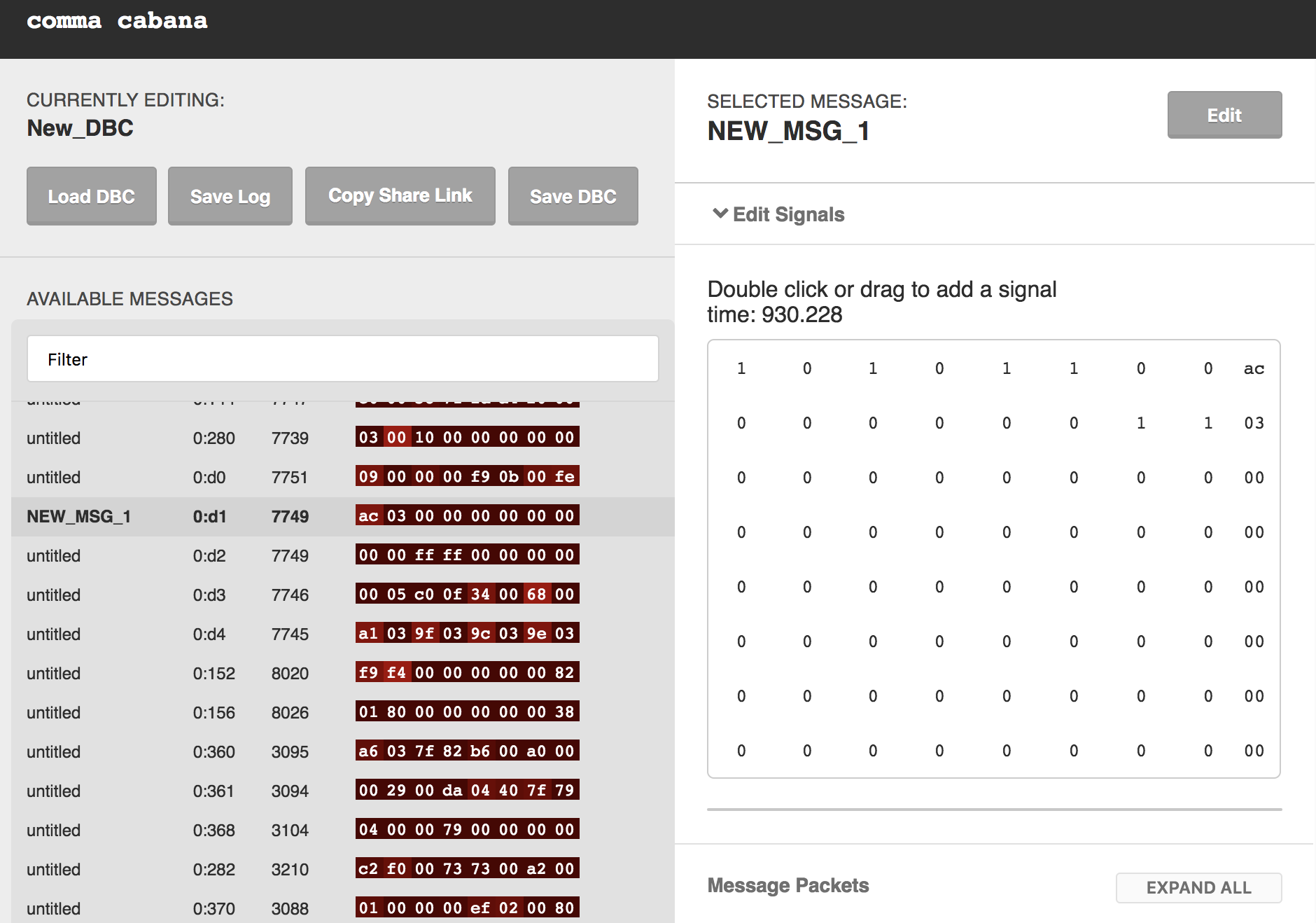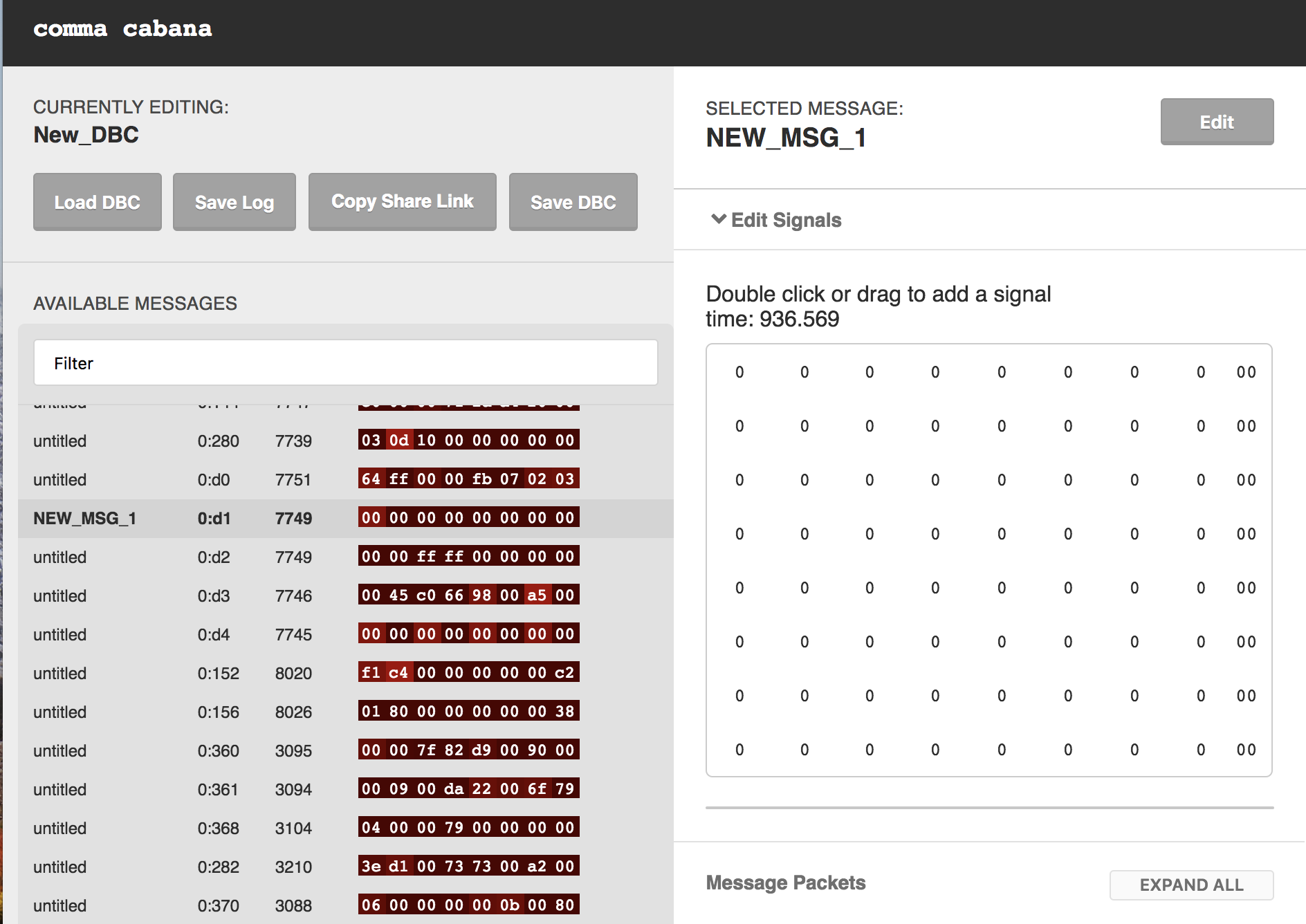Autopsy Of A Car Accident With Comma.ai Part 1
11 Mar 2018Background
The Car
I have been driving a Subaru XV 2013 model for about 4 years. After I get to know the comma.ai team and what they are doing, I purpased one Panda and of cource install the chffr app on my Pixel phone. It is really interesting to see on cabana.comma.ai of my uploaded driving data
The Accident
On one day Nov 2017 I was unfortunately caught in a car accident while driving. The car in front me hit the car before it because of its sudden stop, and with just a blink of lack of concentration I hit the car in front me as well. Everything happened so quickly that the crash could not be avoided even if I stomped the break pedal as soon as I noticed. Luckily I was not harmed despite the airbags all flying out and smashing some of the gidgets that decorate the car.
Autopsy Attempt, Round One
The DBC
Although it is pretty dramtic for me to review the incident footage chffr captured even now, curiosity preempts at the end. I want to know when an accident like this happens, what could chffr catch via Panda.
The first thing I need to figure out is the DBC file for Subaru. With a great open source community, comma.ai provides a opendbc collaboration. Although we have one Subaru Outback DBC available, it is designed to be consumed by the NEO or openpilot. What I need at the moment is to first figure out what do those CAN ID represents
CAN ID
Again with the support of an open source community, I find something would be helpful for me. Given that it is impossible for me to test and figure out the CAN ID meanings while driving, I go to the subaru channel on comma.ai slack and find out there is a collaborative document which Subaru drivers are working on. Exactly what I need to begin with.
CAN IDs needs attention
 CAN ID 0:d1
CAN ID 0:d1
 CAN ID 0:d3
CAN ID 0:d3
From the Subaru CAN ID document, I identify at least initially the above mentioned two things which relates to Break functionality is something I could confirm for XV, which should resemble the Outback design for most of the part.
Confirm With Captured Data
 Captured Data Before Hit
Captured Data Before Hit
 Captured Data During Hit
Captured Data During Hit
 Captured Data After Hit
Captured Data After Hit
As could be seen above, for 0:d1, before hit there is no signal on the break (byte 3), and when the hit happened byte 3 suddenly goes crazy and after hit all the speed and break bytes turn to zero.
For 0:d3, Byte 5 always got value before and during the hit, but remains 98 after the hit. This I assume is because the Byte 5 is signalling the whether the break pedal is pressed. (I of course kept pressing the break pedal for quite a while after the hit)
Next
This is a very coarse attempt on a preliminary examination of what happens in the CAN bus when an accident happens. I will explore more CAN ID meanings (there are quite a few undetermind) and see if i could paint a more holistic picture.